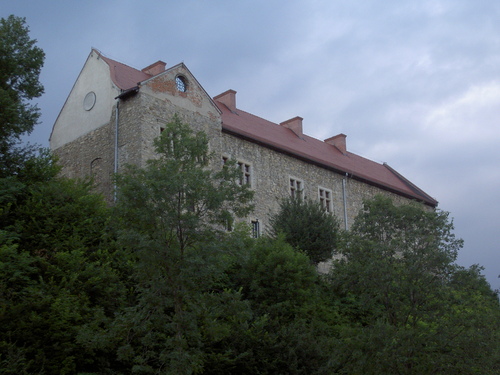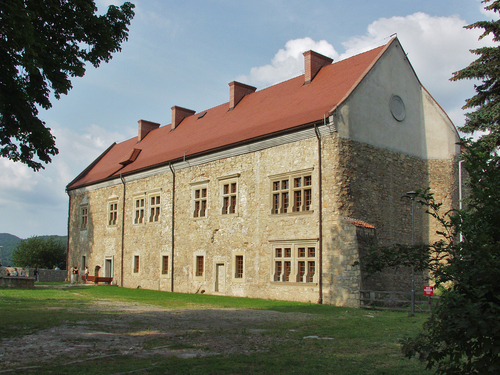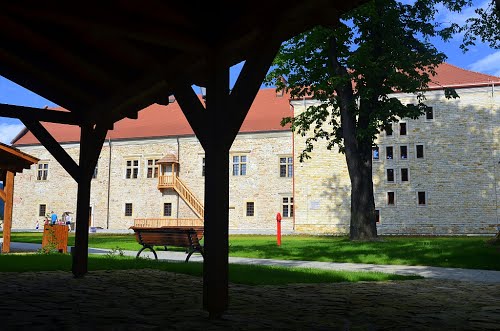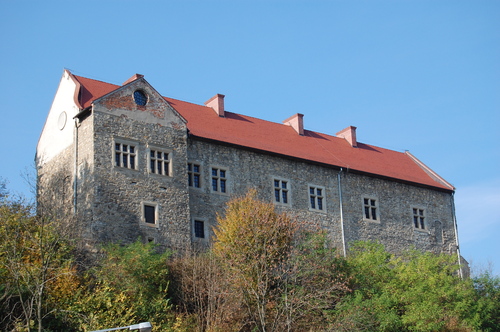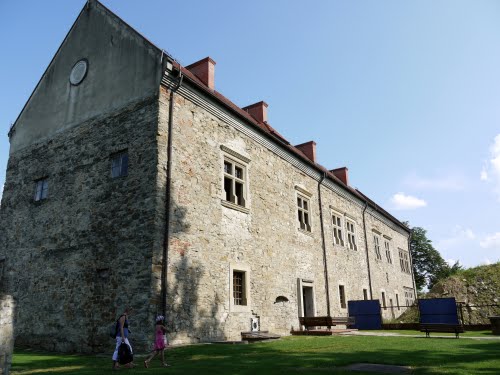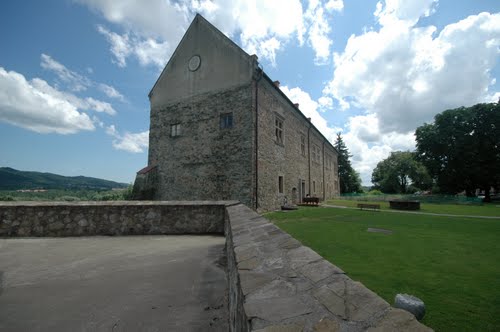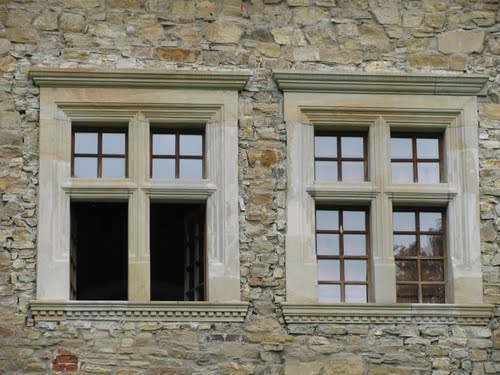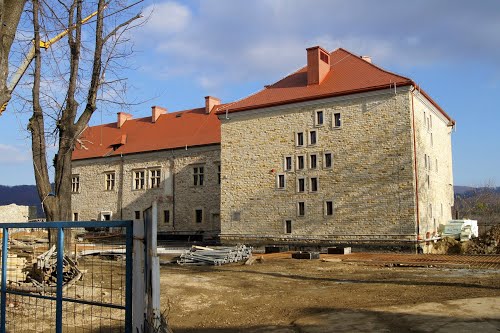The Sanok Royal Castle was built in the late 14th century in Sanok, Poland. The castle is situated on the San River at hill 317 m above sea level on a steep slope. Today it is the seat of the Sanok Historical Museum.
History
The first mention of Sanok is found in 12th-century chronicles. The stronghold was destroyed in the 13th century during the Tatar invasion in 1241. In the 14th century the town of Sanok became fortified and a defensive castle was built.
The earliest mention of the stronghold comes from 1150 and was written in the Hypatian Codex. The Ruthenian chronicler describes the expedition of King Geza II of Hungary to Ruthenia and the capture of the towns of Przemysl and Sanok. In the time of the Piast dynasty, after the recovery of the Red Ruthenia by King Casimir III the Great, the royal palace surrounded by a defensive wall was built on the hilltop.
During the reign of King Wladyslaw Jagiello, his wedding with Elisabeth of Pilica took place at the castle on May 2, 1417. The town and district authorities with a castellan at the top had their seat at the Sanok castle. In 1425, it was established the Higher Court of German law at the Sanok Castle. It was also a residence of the King's fourth wife Sophia of Halshany until her death in 1461. Queen Bona Sforza ordered the rebuilding of the Gothic castle in the Renaissance style between 1523-1548. Between 1555-1556, the castle was the seat of Isabella Jagiellon, Queen of Hungary, after her escape from Transylvania. At the end of the 16th century, the castle underwent further expansion: the south wing was built at that time. At the turn of the 18th century the north wing was added.
In 1915, after the Russian invasion, the South wing was demolished. In the interwar period the castle served as the Museum of Sanok. The Museum, established in 1934 by the Society of Friends of the Region of Sanok, had at first collections of the Sanok region, weapons and arms - the history of the town and castle of Sanok, furniture, artistic craftsmanship. With the beginning of World War II in September 1939, the castle was ransacked. In August 1944, the local German authorities looted the oldest surviving monuments of Polish culture, some of which were retrieved by the Polish Government after the war. Its collections were transferred to the castle where, since 1945, they have formed part of the Historical Museum, added to the latter's collection are some 200 icons from Lemko villages.


